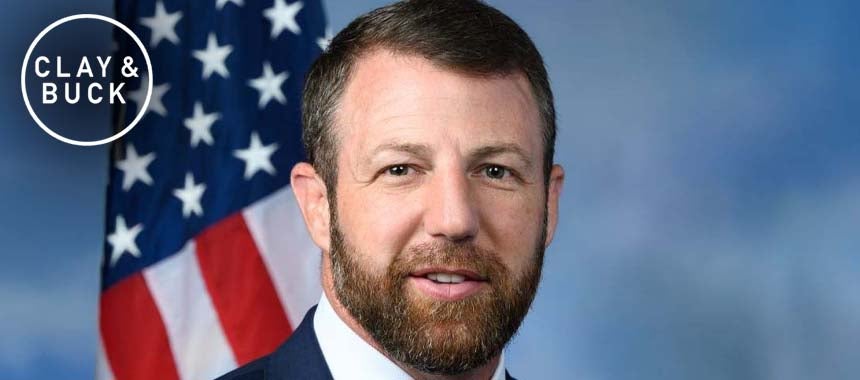Art Laffer Talks Saving the Economy from Biden
21 Jan 2022
BUCK: We are gonna talk economics for a second here, the money in your bank account, your wages, the job market, inflation, how expensive is that cheeseburger you’re hopefully gonna get to eat tonight or whatever you choose. We have someone who can shed light on all of that now, Art Laffer, we all remember him as a former Reagan economic advisor — and, you know, the Laffer Curve. Art is with us now. Sir, great to have you.
LAFFER: Thank you very much. It’s a pleasure being with you.
BUCK: Can we just have you react — ’cause I think this is a good way to get us started here — to Commerce Secretary Gina Raimondo here on what a great economy this is?
LAFFER: It’s not that great. I mean, we have a shortage of labor. In fact, the number of people employed today is way below what it was before the pandemic occurred. What we have is participation rates are about the lowest rate then. We’ve caused all sorts of people to leave the labor force. Now, they’re not unemployed. They just left and went home because we’re giving them so much in the way of transfer payments and welfare that they’re just better off being unemployed than they are actually being in the workforce.
BUCK: Here we go. We actually have the sound bite for you. Cut 13. Play it.
RAIMONDO: As you say, these are, y’know, strong numbers. By any measure now we have this strong economy, y’know, created over six million jobs last year. We’re the only economy in this world that is stronger now than pre-pandemic, and the unemployment rate has fallen like a rock over the past year. So we look at those numbers. I mean, Y’know, week to week, month to month, there are small variations, but it’s a — it’s a strong, uhh, employment picture, y’know, wages are up, jobs are up, growth is up. (sputters) As you say, ummm, y’know, uh, obviously we — we have inflation, and that is what we have to deal with.
BUCK: Art, just the six million jobs created, can you dive into that for a second? ‘Cause that doesn’t seem to pass the smell test.
LAFFER: Well, no, we lost about… If I’m using the numbers correctly here, we lost something like nine million in the pandemic and now we’ve come back six million back, but it’s not increasing any longer. We’ve come back there, so we’re still three million jobs short of what we were before the pandemic. And we’ve had population growth since then. So, as far as participation rates, we’re way below where we were prior to the pandemic.

It’s been collapsing for a long time, and it’s really shown a very sharp deterioration. So people have just left the labor force! They don’t want to work because they’re getting paid all these monies from the government. That’s what’s happening, and when she says that you have these wages rising, that’s true, I think wages went up 4% or something. Now, wages went up 4% and inflation went up 7%. If you like that calculation, I’ve got a bridge to sell you. The real wages are going down in this country because of inflation, and all of that’s happening. I just don’t know where she got her PhD, but it’s sure she didn’t take my class.
CLAY: We’re talking to Art Laffer.
LAFFER: It’s just misuse of numbers. I just hate it when people do that because it’s not true and it leads you to know something that’s not correct!
CLAY: (laughing) Did we fail, Art Laffer, as an economist, that we did not bring your discipline into a discussion surrounding shutdowns? We made only the experts in health be involved. When you look at it purely from an economic perspective, how would you assess the decisions made surrounding covid from a shutdown, a lockdown, a taking-kids-out-of-school perspective?
LAFFER: You know, what I did I was I looked at the growth in the economy up through February of 2020, right, and just dot-line that growth going forward and how much real GDP have we lost because of the pandemic, the lockdowns, the masks — all that stuff put together, including the transfer payment. It’s a huge, huge, huge amount. And I don’t remember exactly what those numbers were. I wish I had my paper in front of me.
But it’s an enormous amount, something like a third of all GDP. And we’re below the trend line where we were. Not only below the trend line, but it’s growing slower. GDP growth is not keeping up with past numbers, and it didn’t catch up the way it should have. So all of this counting growth and jobs from the bottom to where we are now, it’s way below what we should have had in job growth just to catch back up to where we were in February of 2020.
You know, we’ve got a long way to go to catch up, and then we’ve got a long way to go to make up for the losses that we had! This is not a pretty picture, I’m sorry to say. I wish they wouldn’t say it, but they keep saying it. I mean, does anyone think their wages are really going up just because they get a $1 increase in wages and the price of goods you buy goes up $2? I don’t think so.
 BUCK: We’re speaking to Art Laffer, former Reagan economic adviser. And, Art, so, what would happen if they actually… We keep hearing from Biden; one of the prime talking points for how this is all gonna turn around is that the Build Back Better plan will make everything cheaper — which, to those of us who are looking at inflation and government spending and the relationship thereof say, “What do they not get here?” But is…? Can you explain to us exactly what their argument is and whether it holds water?
BUCK: We’re speaking to Art Laffer, former Reagan economic adviser. And, Art, so, what would happen if they actually… We keep hearing from Biden; one of the prime talking points for how this is all gonna turn around is that the Build Back Better plan will make everything cheaper — which, to those of us who are looking at inflation and government spending and the relationship thereof say, “What do they not get here?” But is…? Can you explain to us exactly what their argument is and whether it holds water?
LAFFER: Well, I’ll try to. You know, have you ever heard of a poor person spending himself into wealth?
BUCK: Of course not.
LAFFER: That’s what they’re proposing. We have a bad economy, and we want to take resources away from people who work and give them to people who don’t work. And, you know, if you tax people who work and pay people who don’t work, you’re gonna get a lot of people not working. And that is exactly what happened in the U.S. economy. The only thing is they’re not going on the unemployment rolls. That’s true. They’re going home and taking their payment checks and living nicely without working, without even trying to work.
CLAY: So what should we be doing, from your perspective? You talked about the graph that you did. Starting back in February 2020, things were on fire in the Trump economy, everything was working well and then covid arrived almost like a neutron bomb that goes off there. What should we be doing right now if we wanted to try to get back to the growth trajectory that we had in February of 2020?
LAFFER: Let me first say what I think we should have done then.
CLAY: Okay.
LAFFER: We should have had one bill of maybe $1 trillion, maybe less than that, just one, not the $3.5 trillion that was done then by the president and Congress, and not the $3.2 trillion that was done by Biden when he first got in, and not the $6 trillion that he wants to do with Build Back Better. Just one bill to do Operation Warp Speed. Find that cure, find the remedies as fast as you possibly can. Trump did that beautifully.
It was just a wonderful use of government and government resources to find a solution to a problem really quickly. He deregulated the health care industries and the laboratories and all of that, and we got a vaccine within a year! That’s incredible! We got all these other remedies as well, all this other stuff that was just unbelievable. That’s all that should have been done.
Now, there are people who lost their jobs, that’s true. But everyone lost. And, you know, whenever you transfer money, if you take from someone who’s rich and you give the money to someone who’s poor, by taking from the rich person, you’re gonna reduce that person’s incentive to work and he’s gonna work less, she’s gonna work less. If you give it to someone who’s poor, you provide them with an alternative source of income, and they, too, are gonna work less.
Whenever you transfer resources, you cause a reduction in output, employment, and production. And that’s just what we’ve done in the last two years, 2-1/2 years. And it’s terrible, and you’re seeing the consequences everywhere. It’s not an unemployment rate. You’ve got a supply-side problem now. People don’t want to work ’cause they’re getting paid too much by the government, and they don’t feel the necessity of having to go to work. And it’s going to inure very detrimentally to the long-term prosperity of the U.S. Believe me when I tell you.
 BUCK: If you could get, Art — before we let you go — 60 seconds or so with Biden and whoever actually makes the decisions in this White House around him, but let’s just say we’ll stipulate Biden and his top advisers in the Oval Office. Just for the good of the American economy and the American people, what would you tell ’em to do, that you think theoretically, the Democrats may be willing to go along with or at least consider if they get crushed this fall?
BUCK: If you could get, Art — before we let you go — 60 seconds or so with Biden and whoever actually makes the decisions in this White House around him, but let’s just say we’ll stipulate Biden and his top advisers in the Oval Office. Just for the good of the American economy and the American people, what would you tell ’em to do, that you think theoretically, the Democrats may be willing to go along with or at least consider if they get crushed this fall?
LAFFER: Well, the one thing I think that the Democrats may be willing to consider that would be very good is have a payroll tax rate reduction. I mean, just reduce the payroll tax to half of what it is now, and then you would incentivize workers to come back to work, and you would be able to increase their incentive to go. I was hoping to get one comment with you on Ukraine, though, if you guys are interested in one quick comment.
BUCK: Sure.
LAFFER: ‘Cause when you look at Ukraine — and I’ve been there, I spent some time there, I’m passably knowledgeable on it. The damage is already done with the troops. A credible threat, as the Soviets have posed on the border, achieves what a military victory could only achieve, but it does it without the use of force. Who’s going to invest in the Ukraine today?
No one. I don’t care what happens on the border there, no one’s gonna invest. Ukraine has already been disastrously damaged. If you’ll remember before Poroshenko, the Yanukovych was a pro-Russian president of the Ukraine. Now, Zelensky now is not. But with this type of pressure on Ukraine, there is no way from Sunday they’re gonna come back and be a productive, healthy nation for a long, long time.
CLAY: Art, really quick question: I told my kids that I would ask you about this. How has Ferris Bueller changed your life, the fact that you are mentioned in that movie?
LAFFER: I loved it. It was sort of fun. I enjoyed it very, very much. I was caught flat-footed when I saw it the first time. I know Ben Stein, knew his father very well, but my kids loved it too! I’ve got six kids. I’ve got 13 grandchildren, four great-grandchildren. They love that thing. I just play it over and over and over again for ’em. But it did bother me, if I may say, all those students sitting there with their faces on the desk, drooling all over the desk and not paying attention.
CLAY: (laughing)
LAFFER: In my classes I’d have snapped them out of there.
BUCK: There we go.
CLAY: (laughing)
BUCK: Art Laffer, everybody. Great question, Clay. Art, thanks so much.
LAFFER: Hey, thanks! Talk to you.
Recent Stories

C&B Say Thank You for Listening and Watching!
Wherever and however you choose to consume the show, we are thankful!

Culture Wins: Southern Schools Are Booming for a Reason
Clay relates a personal story that illustrates the shift.

From Lunges to CFP Predictions, Clay Catches Up with Markwayne Mullin
The Oklahoma senator has some fun -- and talks some serious issues, too.







